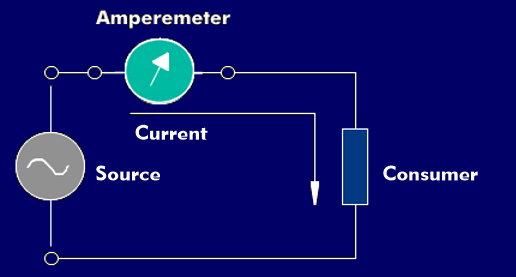current measurement
Current measurements are carried out with ammeters, and for higher currents also with current transformers or current clamps. For current measurements with the ammeter, the circuit is disconnected and the ammeter is connected in series with the load.
To ensure that the voltage drop at the ammeter is as low as possible and does not cause a measurement error, the internal resistance( Ri) of the measuring device must be small. Since the ammeter is in series with the load, the total load current flows through it. This current flow causes a voltage drop across the internal resistance which reduces the total voltage and thus the current flowing through the ammeter and the load. The lower the internal resistance, the lower the voltage drop and the measurement error caused.
Larger currents are measured with current transformers, instrument transformers or by connecting a parallel resistor, a shunt resistor, in series. The techniques can be used for measuring range extensions.
It is different with current clamps. They work on the transformer principle with the voltage induced in the windings of the current clamp. However, current clamps that work exclusively on the transformer principle can only be used for AC current measurements. For the measurement of direct current, current clamps are equipped with Hall sensors or magnetic field sensors.

